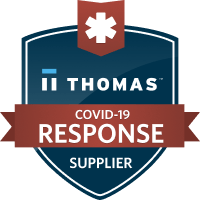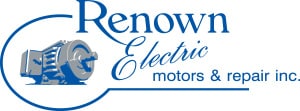Blog
Using a hydraulic turbine, hydroelectric generators convert the mechanical energy of flowing water into electricity. Hydroelectric generators are connected to the turbine via a salient pole rotor. Generator rotors have field poles, which are multi-layered electromagnetic steel laminations surrounded by loops of wire arranged on the perimeter of the rotor. The number of field poles on a rotor depends on the rated speed of the generator. The water’s mechanical energy spins a turbine, forcing the field poles to rotate. As the generator circulates direct current through the rotating field poles, the poles pass by stationary conductors in the generator’s stator. This interaction generates a flow of electricity with a voltage, thereby generating usable electricity for storage and distribution.
How Does a Hydroelectric Generator Work?
Since hydro power relies on flowing water, most hydroelectric plants are built near a source of moving water, such as a river or a dam. In fact, most plants either directly use run-of-the-river water or pumped water storage to power the system. The volume of moving water and the change in elevation determines the energy available to the generator. The greater the water flow and change in elevation, the greater the mechanical energy that can be converted to electrical energy.
In the plant, the water itself flows through a penstock or pipe, surging against and spinning the blades of a turbine, causing the rotor with the field poles to rotate. This motion spins the generator and creates electricity.
Repairs for Hydroelectric Generators
Hydroelectric generators transform mechanical energy from the spinning turbines into electrical energy using electromagnetic coils within the generator stator and rotor. The harsh operating environment and sheer amount of energy flowing through the hydroelectric system places enormous stress on the components within the generator. Coil winding failures and mechanical failures are the two most common issues faced by operators of hydroelectric generators.
Coil Winding Failures
When a stator or rotor in a hydroelectric generator fails due to damage or the effects of thermal aging, they must be rewound. The rewinding process involves taking detailed as-found data and measurements of the existing windings to enable new coils to be reverse engineered. The original windings are then stripped from the generator, and further measurements of these coils are taken to ensure that the correct geometry is maintained for the new coils.
Rewinding a hydroelectric generator stator also provides an ideal opportunity to enhance the performance of the generator by utilizing conductors having an increased cross-sectional area over the original coils. Using larger conductors will reduce I2R losses in the winding and thereby improve the overall efficiency of the generator.
Mechanical Failures
Mechanical failure of a hydroelectric generator can be caused by a number of underlying issues. If any part of the system is misaligned or unbalanced, the hydroelectric equipment may experience high levels of vibration that can damage the overall system. A vibration analysis conducted while the generator is operating allows technicians to detect the location and nature of balance or alignment issues to facilitate correction at the source. Imbalance and misalignment can be caused by anything from a loose fastener or bearing to broken welds and rotor defects.
Other common repairs and maintenance for hydroelectric generators include the repair and replacement of:
- Bearings
- Slip rings
- Brush rigging
- Exciter components
- Rotors
- Stators
Maintenance can also include the cleaning of rotors and stators in-situ. The size and weight of a hydroelectric generator can make repairs and maintenance difficult, but experienced and competent technicians are capable of conducting many repairs on location. Dry-Ice blasting, certain machining operations and rebuilding brush rigging are all examples of common repairs done in the field.
The Importance of Electric Motor and Generator Repairs
Electric motors and generators need regular repair and maintenance to keep them running efficiently and to minimize the risk of more severe breakage down the line. If left unsolved, mechanical and electrical issues will only be exacerbated, leading to more downtime, more expensive repairs, and increased safety risks. With the right repair and maintenance services, you can minimize both unscheduled and scheduled downtime to ensure an uninterrupted power generation schedule.
Regular maintenance is a cost-effective, predictable, and efficient way to manage the productivity and costs of hydroelectric operations. A maintenance strategy gives you an overview of your equipment’s components, current condition, and expected service life. You can avoid prolonged downtime and costly emergency repairs with proper contingency planning (link to Renown’s contingency planning guide (planned outage?) for more details).
Your Source for Hydroelectric Industry Generator and Motor Solutions
Without all these critical components in working order, hydroelectric generators cannot function properly. At Renown Electric, we specialize in the repair and maintenance of electrical rotating machines for organizations throughout the power generation sector. Learn more about hydroelectric generators, some of the most common repairs, and how our team can help.
With the increased demand for renewable energy facilities, proper repairs and maintenance of hydroelectric power plants are more important than ever. For nearly 40 years, Renown Electric’s technicians and engineers have been providing customers in the power industry with reliable, high-quality products and services. Renown Electric is ISO 9001:2015 and CSA certified, and our quality assurance inspections and testing ensure our repair processes comply with strict OEM regulations.
Contact us today to learn more or to create the right maintenance plan for your motors and generators.








Comments are closed